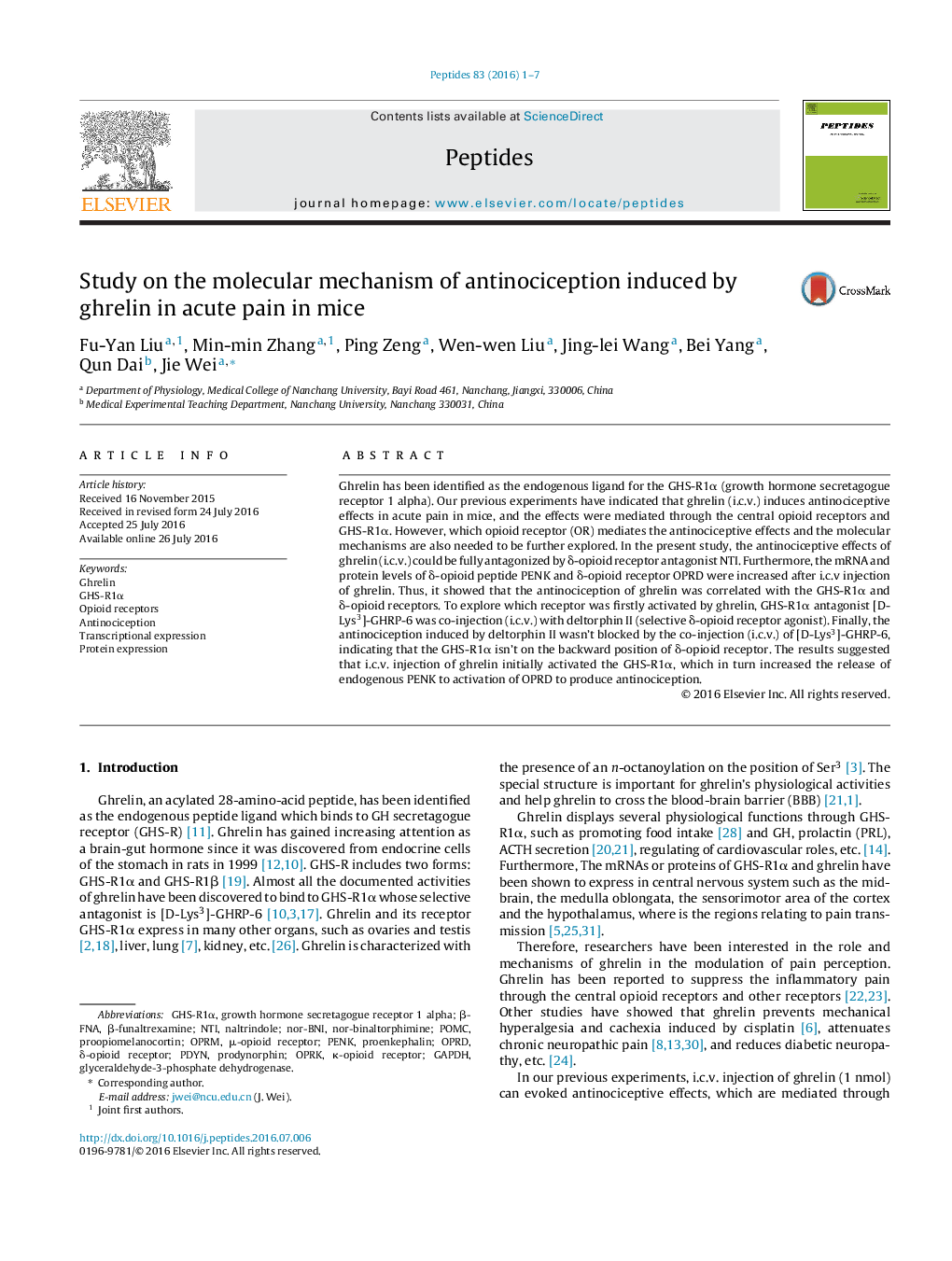| کد مقاله | کد نشریه | سال انتشار | مقاله انگلیسی | نسخه تمام متن |
|---|---|---|---|---|
| 2005788 | 1541696 | 2016 | 7 صفحه PDF | دانلود رایگان |
عنوان انگلیسی مقاله ISI
Study on the molecular mechanism of antinociception induced by ghrelin in acute pain in mice
ترجمه فارسی عنوان
مطالعهی مکانیزم مولکولی ضددردی ناشی از گرلین در درد حاد در موش
دانلود مقاله + سفارش ترجمه
دانلود مقاله ISI انگلیسی
رایگان برای ایرانیان
کلمات کلیدی
GAPDHNTIProenkephalinβ-funaltrexamineβ-FNApDynOprMPOMCoprD - oprdδ-Opioid receptor - δ-گیرنده اپیوئیدμ-Opioid receptor - μ-گیرنده اپیوئیدNaltrindole - آن را بشکنیدTranscriptional expression - بیان ترکیبیProtein expression - بیان پروتئینAntinociception - ضد انعقادNor-BNI - نور BNINor-binaltorphimine - نور باینلورفیمیمproopiomelanocortin - پروپیوملانوکورتینprodynorphin - پروین دینورفینPENK - پینکGhrelin - گرلینglyceraldehyde-3-phosphate dehydrogenase - گلیسرالیدید-3-فسفات دهیدروژنازκ-opioid receptor - گیرنده κ-اپوئیدOpioid receptors - گیرنده های اپیدمی
موضوعات مرتبط
علوم زیستی و بیوفناوری
بیوشیمی، ژنتیک و زیست شناسی مولکولی
زیست شیمی
چکیده انگلیسی
Ghrelin has been identified as the endogenous ligand for the GHS-R1α (growth hormone secretagogue receptor 1 alpha). Our previous experiments have indicated that ghrelin (i.c.v.) induces antinociceptive effects in acute pain in mice, and the effects were mediated through the central opioid receptors and GHS-R1α. However, which opioid receptor (OR) mediates the antinociceptive effects and the molecular mechanisms are also needed to be further explored. In the present study, the antinociceptive effects of ghrelin (i.c.v.) could be fully antagonized by δ-opioid receptor antagonist NTI. Furthermore, the mRNA and protein levels of δ-opioid peptide PENK and δ-opioid receptor OPRD were increased after i.c.v injection of ghrelin. Thus, it showed that the antinociception of ghrelin was correlated with the GHS-R1α and δ-opioid receptors. To explore which receptor was firstly activated by ghrelin, GHS-R1α antagonist [D-Lys3]-GHRP-6 was co-injection (i.c.v.) with deltorphin II (selective δ-opioid receptor agonist). Finally, the antinociception induced by deltorphin II wasn't blocked by the co-injection (i.c.v.) of [D-Lys3]-GHRP-6, indicating that the GHS-R1α isn't on the backward position of δ-opioid receptor. The results suggested that i.c.v. injection of ghrelin initially activated the GHS-R1α, which in turn increased the release of endogenous PENK to activation of OPRD to produce antinociception.
ناشر
Database: Elsevier - ScienceDirect (ساینس دایرکت)
Journal: Peptides - Volume 83, September 2016, Pages 1-7
Journal: Peptides - Volume 83, September 2016, Pages 1-7
نویسندگان
Fu-Yan Liu, Min-min Zhang, Ping Zeng, Wen-wen Liu, Jing-lei Wang, Bei Yang, Qun Dai, Jie Wei,
